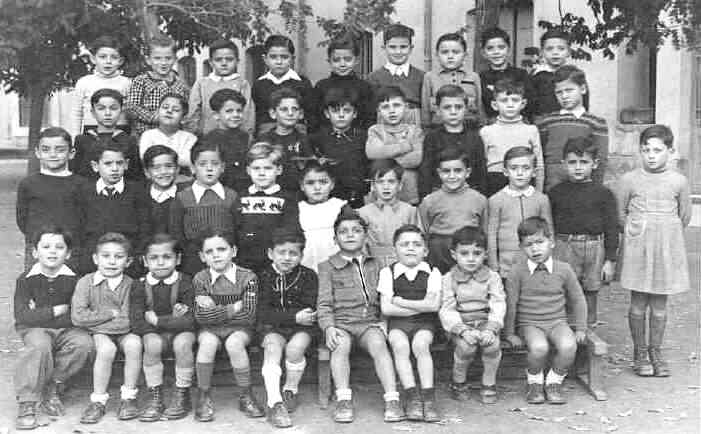
Figure 1.--Here we see children at the Carnot Jewish School after the War in 1946. We do not yet fully understand what happened to these children and their parents during the War. Click on the image for information about the Holocaust in Tunisia.

We have no detailed information at this time about the Ecole Carnot in French colonial Tunisia. We do not know where it was located in Tunisia. All that we know is that it was a Jewish school. The school portrait is of boys. We do not know if the school was a boys' school or that there were different classes for boys abnd girls. We have only one photograph from the school. The portrait here was taken in 1946 (fifure 1). The children were very lucky. Tunisia was one of the few countries occupied bu NAZI Germany in wgich the Jewish populationwas not decimated. We do not know how the school was affected by Vichy anti-Semetic legislation or the even more severe NAZI regime during the NAZI occupation.
We have no detailed information at this time about the Ecole Carnot in French colonial Tunisia. All that we know is that it was a Jewish school. Here we do not know if the children attended a separate Jewish school because their parents desired this or because they were not welcome at the state schools. We also do not know to what extent Jewish schools were affected by the Vichy regime. The image here was taken just after World War II in 1946. The children are dressed like French children, if we did not know this was a Jewish school, ther would be no way of telling. A French reader agrees. "Note that the children of the Jewish community are dressed like their French counterparts." The school portrait is of boys. We do not know if the school was a boys' school or that there were different classes for boys abnd girls.
We have only one photograph from the school. The portrait here was taken in 1946, just after the end of the War (figure 1). These Jewish children were very lucky. Tunisia was one of the few countries occupied bu NAZI Germany in which the Jewish population was not decimated. In Denmark and Bulgaria the local people assisted the Jews. In Tunisia, the Allies arrived before the NZIs had time to murder the Jews.
Tunisia was the only French colony actually occupied by the NAZIs (November 1942). The NAZIs expanded the Vichy anti-Semetic program and prepared for the muder of the approximatelt 90,000 Tunisian Jews. The military situation, however, did not allow them the time to carry this out. The Allies overwealmed the Axis troops in Tunisia which were forced to surrender (May 1943). The children here were among the very fortunate Tunisian which survived the War. We do not know how the school was affected by Vichy anti-Semetic legislation or the even more severe NAZI regime during the NAZI occupation.
We do not know where it was located in Tunisia.
A reader asks, "Is the child on the far right a boy in a smock? He seems to be the only one. I thought smocks were worn with pants? If it is a dress, is not this very late for a pure dress to be worn? Or, is this a remnant due to the isolation of the colonists from the mainstream fashion trends of the parent country?" The child at the right is definitely a boy wearing a smock. He undoubtedly is wearing short pants. Its a little hard to tell, but there is at least one other boy wearing a smock, he is near the center in the second row.
A French reader writes, "Pinafores for boys didn't exist in Fance during 1936-70,
I guess this boy is wearing a romper " Barboteuse bain de soleil ". His little mate in side wore a smock " tablier ".
We agree that we no longer see French boys wearing pinafores by the 1930s, but this does not romper outfit to us. Barboteuse bain de soleil generally had narrow shoulder straps and a bib front. The garment here fully covers the boys top except that the sleeves are cut out which is the design of a standard pinafore.
It may be that this boy was so young that his mother sent him to school in a pinafore instead of a smock, not realising the gender conventions involved. He does look younger than the other boys. Perhaps it was a hand-me-down from his sister. Or perhaps the child is a girl, the daughter of the teacher or other staff member. We sometimes notice this at single gender schools.
Right next to him is a child wearing a pinafore. A couple boys in the back row may also be wearing smocks. Tunisia was a colony, but we note the children wearing clothes that were quite similar to those in France itself. A French reader writes, "The child at the right is certainly a boy. The whole class is boys. The children in Tunisia wore exactly with the same garments as those seen in metropolitan France. In the school portrait here, several boys are wearing smocks. Sometime in certain schools, practicly all boys are wearing smocks. In other schools, few are wearing them.
Navigate the HBC North African School Pages
[Morocco]
[Algeria]
[Tunisia]
[Libya]
[Egypt]
[England]
[France]
[Italy]
Related Style Pages in the Boys' Historical Web Site
[Long pants suits]
[Knicker suits]
[Short pants suits]
[School smocks]
[Pinafores]
[Socks]
[Eton suits]
[Jacket and trousers]
[Blazer]
[School sandals]
Navigate the Boys' Historical Clothing Web Page
[Main Tunisian individual school page]
[Main school country page]
[Introduction]
[Activities]
[Biographies]
[Chronology]
[Cloth and textiles]
[Clothing styles]
[Countries]
[Topics]
[Bibliographies]
[Contributions]
[FAQs]
[Glosario en Espaņol]
[Satellite sites]
[Tools]
[Boys' Clothing Home]
